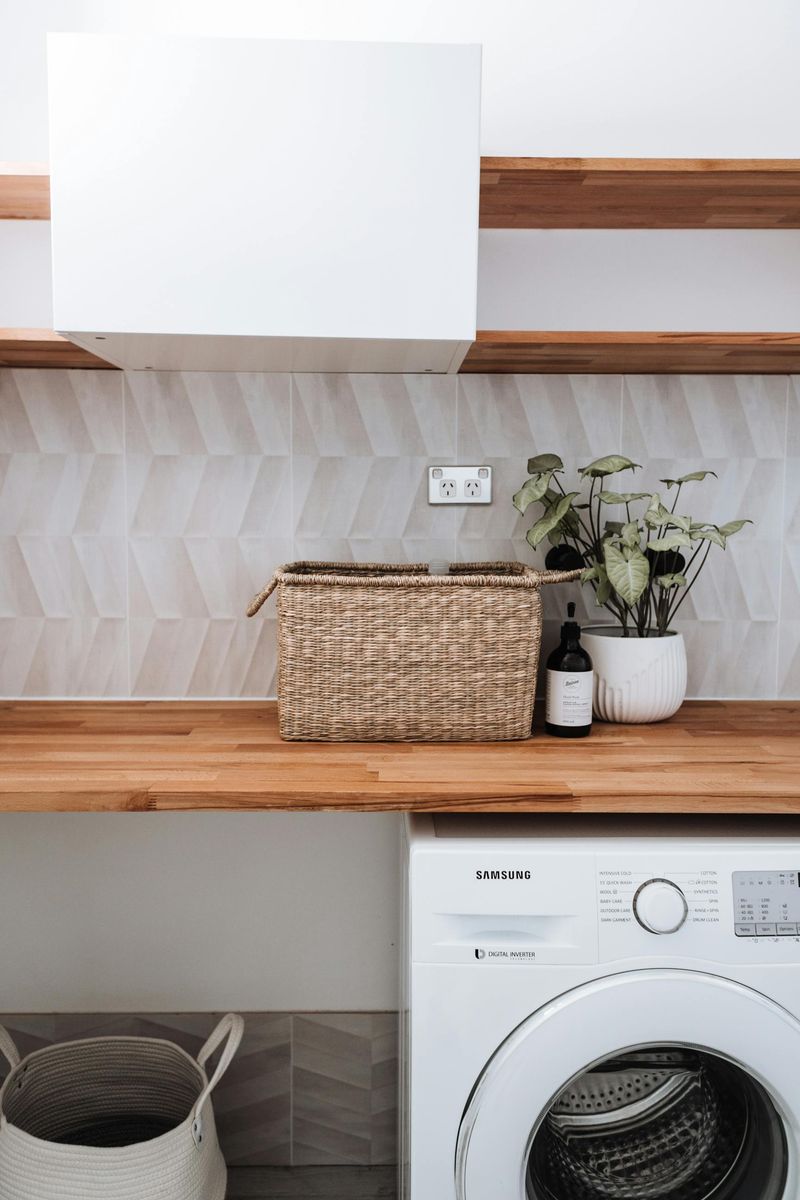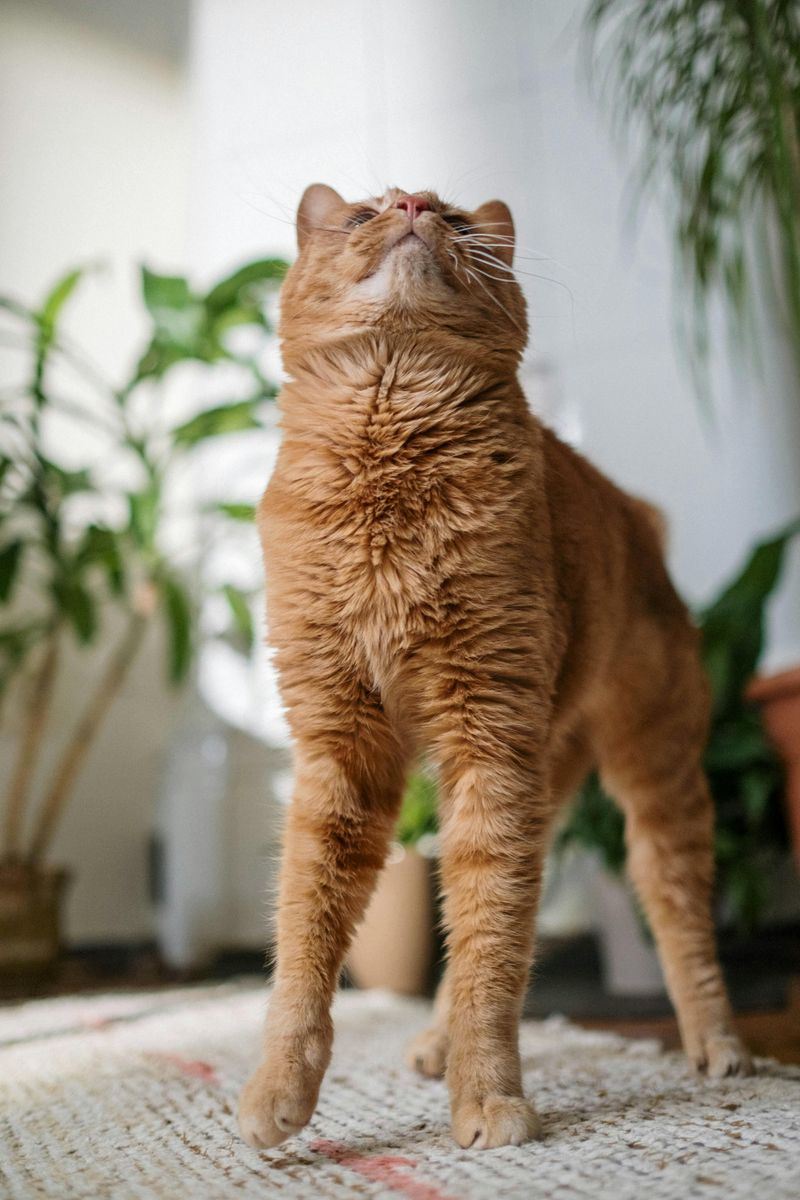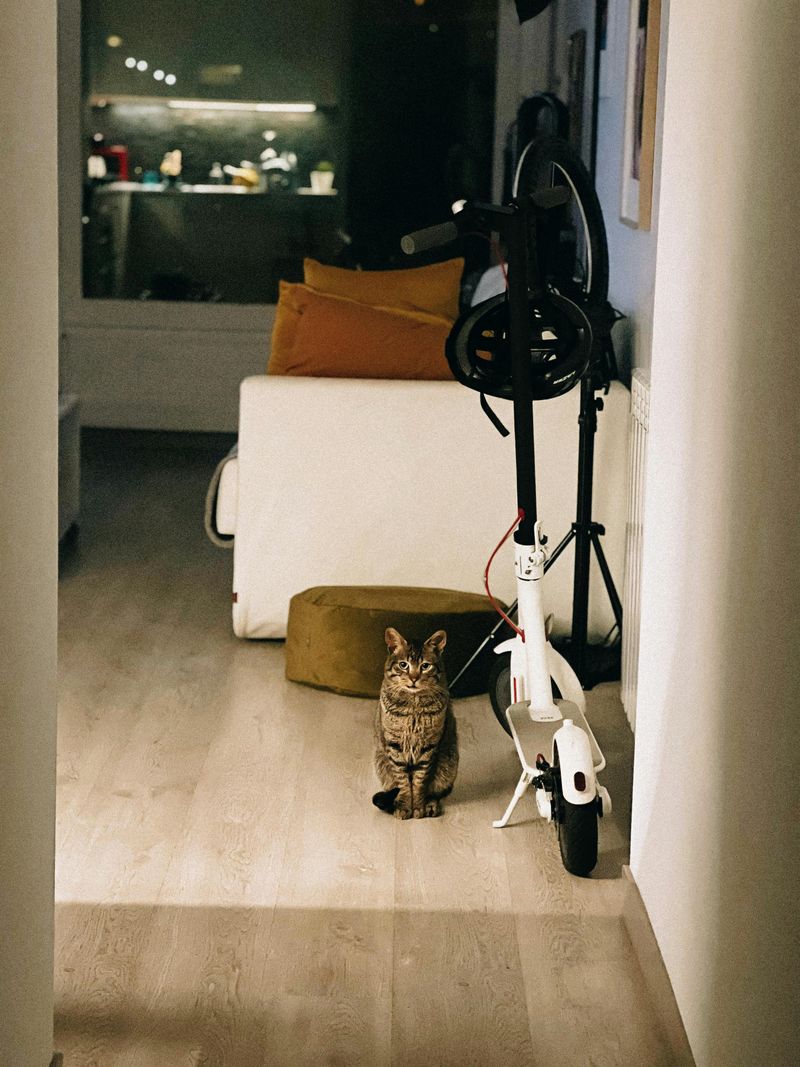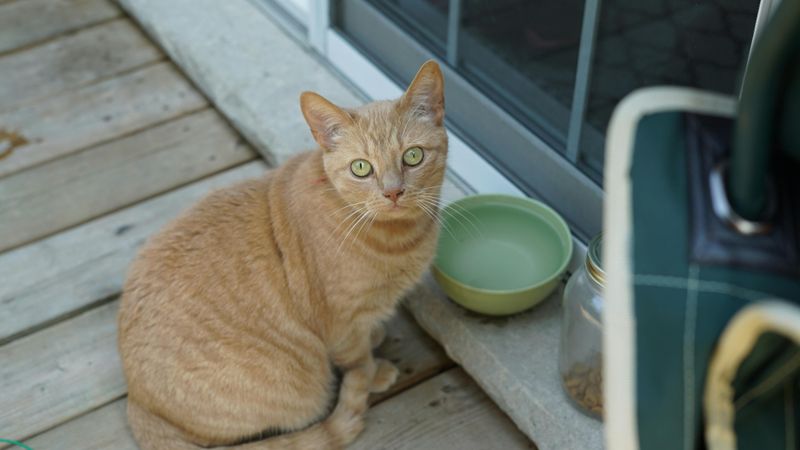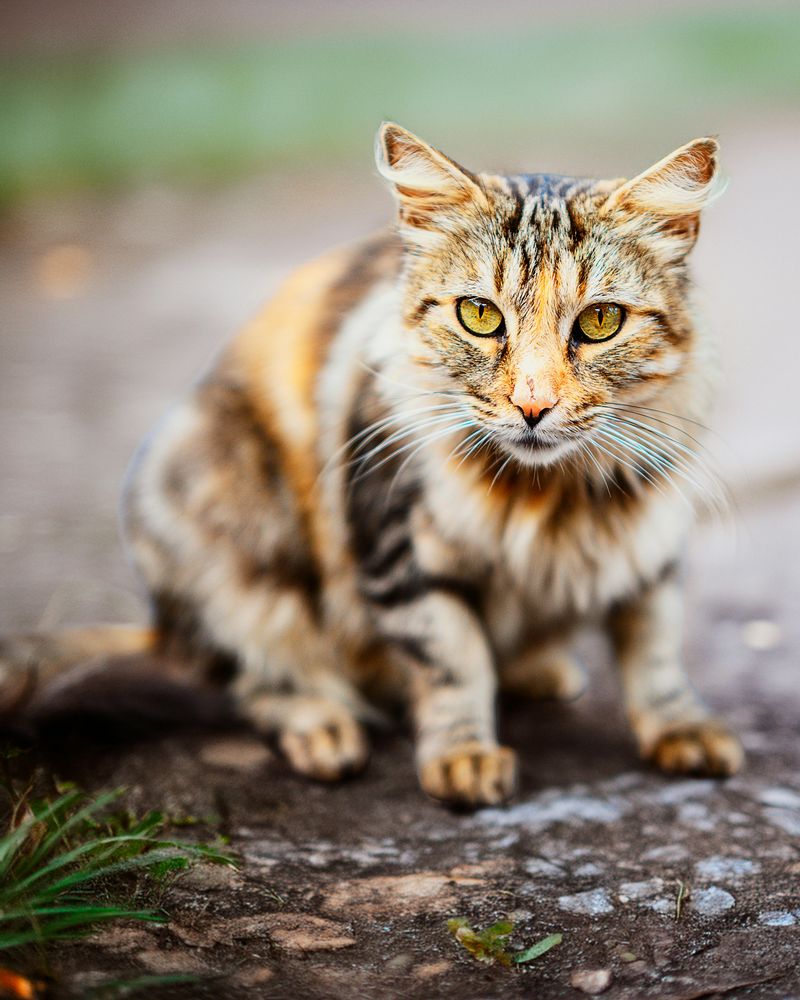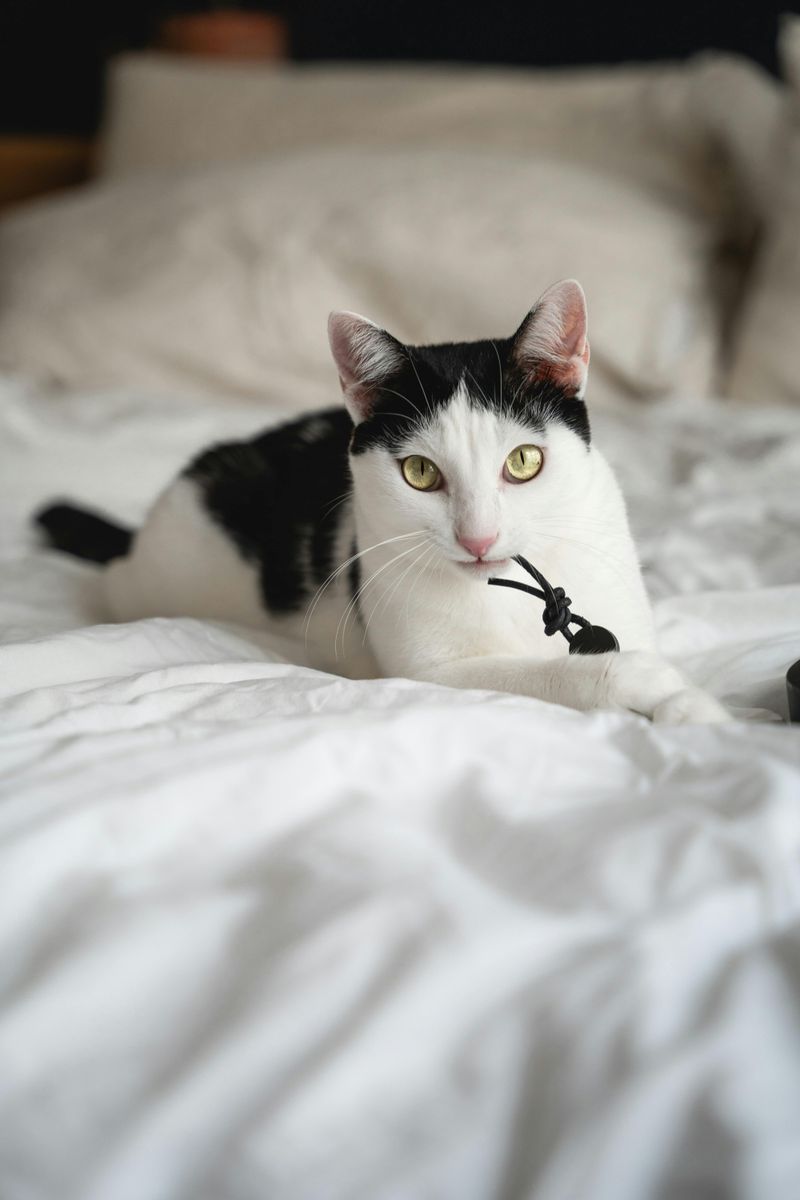📖 Table of Content:
- 1. Noisy Laundry Rooms
- 2. Citrus-Scented Areas
- 3. Cramped Hiding Spots
- 4. Busy Hallways and Thoroughfares
- 5. Water Bowl Locations Near Food
- 6. Litter Boxes in Noisy, High-Traffic Areas
- 7. Areas With Unpredictable Movements
- 8. Slippery Surfaces and Countertops
- 9. Rooms With Unfamiliar Smells or New Furniture
To us, it’s just a laundry room. Or a hallway. Or a nice, citrus-scented kitchen. But to your cat? It might as well be a haunted house full of invisible dangers.
Cats are creatures of comfort, yes—but more than that, they’re wired for survival. Every nook and cranny of your home gets judged by one simple feline metric: “Is this safe?” And what we often overlook as humans—noise, scent, texture, and layout—can instantly trigger a cat’s stress response.
Ever noticed your cat bolt out of a room for no obvious reason? Or ignore that expensive bed you bought in favor of a paper bag? It’s not about being picky—it’s about instinct. Domestic as they may be, cats still think like wild animals. They scan for threats, prefer multiple escape routes, and avoid anything that smells suspicious or unpredictable.
So before you blame your kitty for being “dramatic,” check the surroundings. You might be surprised at how easy it is to turn a stress-filled space into a peaceful feline paradise.
1. Noisy Laundry Rooms
Washing machines and dryers create a thunderous racket that sends most cats running for cover. The unpredictable sounds of sloshing water, spinning drums, and buzzing alerts trigger a cat’s sensitive hearing, making laundry rooms feel like danger zones.
Scheduling laundry for when your cat typically naps in another room can help. Create a quiet retreat nearby with a soft bed placed on a high shelf, giving your cat a secure vantage point above the noise. Adding a white noise machine can also mask the startling sounds that make this space so intimidating.
2. Citrus-Scented Areas
The sharp smell of oranges, lemons, and grapefruits might brighten your day, but cats find these scents absolutely repulsive. Their sensitive noses can detect citrus oils from across the room, triggering an immediate avoidance response. Many cleaning products capitalize on this very scent that cats hate.
Switch to unscented or cat-friendly cleaning products in areas where you want your cat to feel comfortable. Store citrus fruits in closed containers rather than decorative bowls.
For cat-frequented spaces, consider using feline-approved scents like valerian or silver vine that actually attract cats rather than drive them away.
3. Cramped Hiding Spots
While cats love to squeeze into small spaces, they avoid tight spots that don’t offer an escape route. A box with only one opening or a narrow gap behind furniture can quickly transform from a cozy retreat to a panic-inducing trap if another household pet approaches.
Create hiding spots with multiple exits so your cat never feels cornered. A tunnel with openings at both ends provides security without anxiety. Arrange furniture to leave cat-sized pathways along walls, allowing easy movement throughout your home.
Remember – cats need to see escape routes to feel safe enough to relax in a space.
4. Busy Hallways and Thoroughfares
High-traffic areas make many cats nervous. The constant foot traffic, unexpected movements, and unpredictable noise levels in busy hallways or doorways create stress for cats who prefer to observe their surroundings from secure positions.
Installing cat shelves or perches along walls creates elevated pathways above the hustle and bustle. These high routes allow cats to traverse busy areas without feeling threatened by human movement below. Adding carpet runners can also help, as the softer surface reduces startling footstep sounds and provides better traction for quick getaways if your cat feels the need to dash to safety.
5. Water Bowl Locations Near Food
Many cat owners place water bowls right next to food dishes, yet cats often avoid drinking there. Wild felines instinctively separate eating and drinking locations to prevent food contamination in their water sources. This evolutionary behavior persists in our domestic companions.
Place multiple water stations throughout your home, away from feeding areas. Ceramic or stainless steel bowls prevent the plastic taste that many cats dislike.
Fresh, moving water appeals to cats more than stagnant bowls, so consider a pet fountain. The gentle bubbling mimics natural streams and encourages proper hydration, potentially preventing urinary tract issues common in under-hydrated cats.
6. Litter Boxes in Noisy, High-Traffic Areas
Cats require privacy and safety during vulnerable moments. Litter boxes placed near washing machines, busy doorways, or loud appliances often go unused as cats seek quieter alternatives, like your potted plant or laundry basket!
Relocate litter boxes to quiet, low-traffic areas that still remain easily accessible. Basements and garages might seem private, but can feel too isolated or scary. A quiet corner of a spare bedroom or bathroom usually works better.
Remove lids or hoods that trap odors inside, which cats find offensive. For multi-cat households, follow the “n+1 rule”—provide one more box than the number of cats.
7. Areas With Unpredictable Movements
Ceiling fans, automated toys, or spaces with sudden movements send cats into high alert mode. These unpredictable mechanical motions trigger a cat’s prey drive while simultaneously activating their survival instincts, creating a confusing mixed message of “chase it” and “run away” that most cats solve by avoiding the area entirely.
Introduce new moving objects gradually, allowing your cat to observe from a safe distance. Keep ceiling fans on consistent speeds rather than changing settings frequently. For automated pet toys, establish a regular play schedule so your cat can anticipate when movement will occur.
Creating this predictability transforms formerly stressful spaces into enrichment zones your cat might actually enjoy.
8. Slippery Surfaces and Countertops
Marble, granite, and polished wood surfaces look beautiful in our homes, but feel treacherous under sensitive paw pads. Cats avoid these slippery areas where they can’t gain proper traction, making elegant countertops and tables surprisingly cat-repellent.
Strategic placement of textured mats or runners provides safe pathways across slick floors. For counters you actually want cats to avoid, this natural aversion works in your favor! But for areas you’d like your cat to enjoy, consider adding sisal mats or microfiber runners that give claws something to grip.
Senior cats especially appreciate these modifications as they help prevent falls and joint strain.
9. Rooms With Unfamiliar Smells or New Furniture
Cats rely heavily on scent recognition to feel secure in their territory. New furniture, recent renovations, or rooms with unfamiliar smells often become temporary no-go zones until cats can properly mark these spaces as their own.
Help your cat adjust by transferring their scent to new items. Rub a soft cloth gently around your cat’s cheeks where scent glands are located, then wipe this cloth on new furniture corners. Place familiar cat beds or toys near new items to create scent bridges.
Synthetic feline pheromones like Feliway can also ease this transition, signaling to your cat that strange-smelling areas are actually safe territory.

